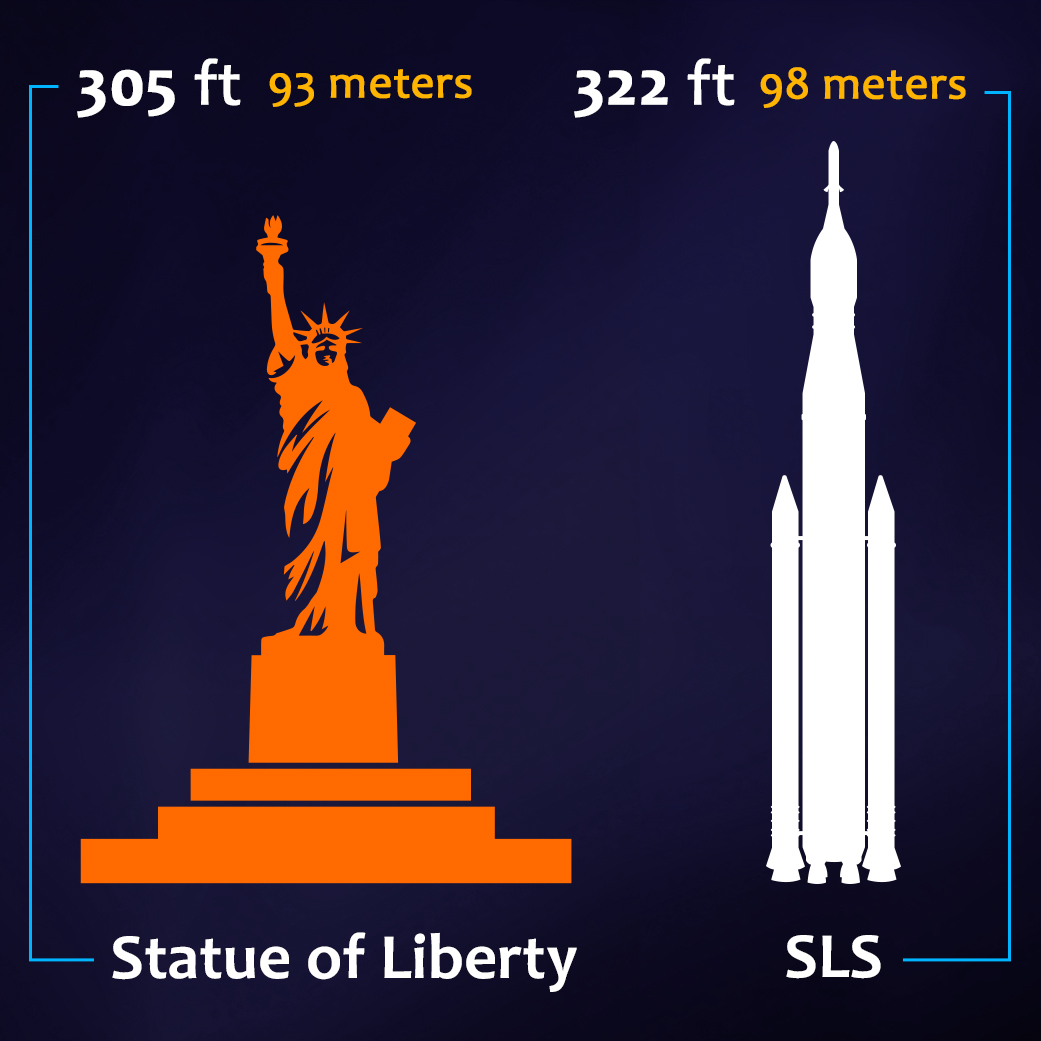This article is for students grades K-4.
The Space Launch System is NASA’s newest rocket. It is called SLS for short. It is called a super heavy-lift launch vehicle. It will launch a spacecraft to send astronauts farther in space than we have ever gone. The rocket is an important part of NASA’s Artemis missions. Artemis is the program that plans to send the first woman and first person of color to the Moon.
How Big Is the SLS Rocket?
SLS is taller than the Statue of Liberty. At liftoff, the rocket will weigh as much as eight jumbo jets. SLS is so powerful, it could carry the weight of 12 full-grown elephants. SLS can carry a lot of weight!
How Is SLS Made?
Rockets are built in many sizes. Some rockets are more powerful than others. Super heavy-lift rockets are the most powerful. When SLS launches, it will be able to carry more than any rocket in the world. It will launch the Orion spacecraft off of Earth. Orion will carry astronauts to the Moon.
SLS has Four Main Parts
NASA tests all the parts of SLS to be sure the rocket will fly safely.
It will carry more and have more energy than any rocket in the world. The SLS is made so that NASA can change the rocket when it is not carrying a crew of astronauts. If astronauts go, Orion will be on top of the SLS. Sometimes, only cargo will go to space. Cargo includes tools and science experiments. The rocket will look different when it carries only cargo.
What Will SLS Do?
NASA built the SLS rocket to help a spacecraft fly far into space. The rocket will not go to the Moon but will launch the Orion spacecraft with a crew of astronauts to go to the Moon. The rocket lifts off at NASA’s Kennedy Space Center in Florida. The engines give a big push that lifts the rocket off the launchpad. The engines have to push against the pull of gravity. Two minutes after launch, the rocket is high above Earth. The two white solid rocket boosters on the sides have burned all their fuel. They come off the rocket and fall back to Earth. The boosters splash into the sea.
Eight minutes after launch, the orange core stage finishes its job. The four engines shut down. Then, the orange part of the rocket falls off and burns up in Earth’s atmosphere. Only one part of SLS is left; it is called the upper stage. The upper stage has an engine. That engine pushes Orion faster and higher. The SLS rocket is so fast it could fly around Earth in only 66 minutes! Two hours after launch, Orion is more than 2,000 miles from Earth. The work of the SLS rocket is finished. The upper stage comes off and burns up. Orion finishes the trip to the Moon without the rocket in three days.
Watch a pre-launch play-by-play at NASA’s Kennedy Space Center in Florida.
What Are the Plans for SLS?
The first SLS mission was called Artemis I (Roman numeral 1). Artemis I launched the Orion spacecraft on top of SLS with no astronauts on Nov. 16, 2022. Orion went past the Moon and back to Earth. This mission was to test to make sure that the SLS and Orion work as planned.
On the Artemis II (Roman numeral 2) mission, the SLS rocket will launch Orion carrying four astronauts. Orion will fly past the Moon and back to Earth. The mission will take people farther into space than anyone has ever traveled. On the Artemis III (Roman numeral 3) mission, SLS will launch with Orion. This time astronauts will land on the Moon’s South Pole.
Watch actual launch footage and Artemis I’s journey to the Moon!
Why Is the Space Launch System Important?
NASA wants to learn more about the universe. The SLS rocket will help NASA do it. Missions at the Moon will help NASA prepare to send astronauts to Mars. SLS has enough power to send astronauts and supplies to the Moon in one trip. The rocket can also send large and heavy tools and experiments to the Moon or Mars.
More About Space Launch System
Puzzle Book
Space Launch System Coloring Book (PDF)
Story: What Is the Artemis Program?
Story: What Is Orion?





























